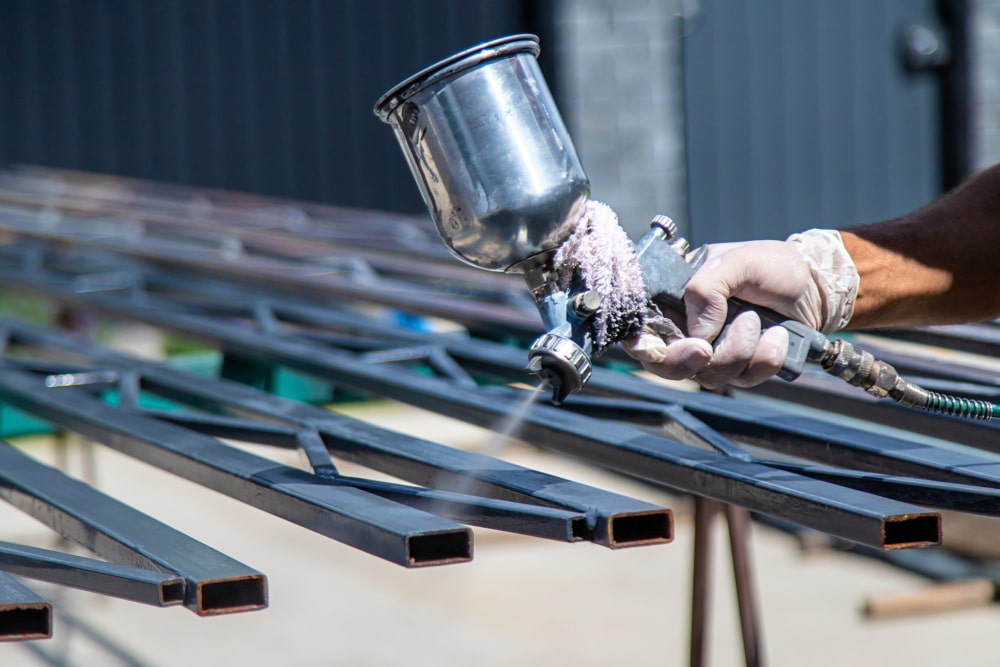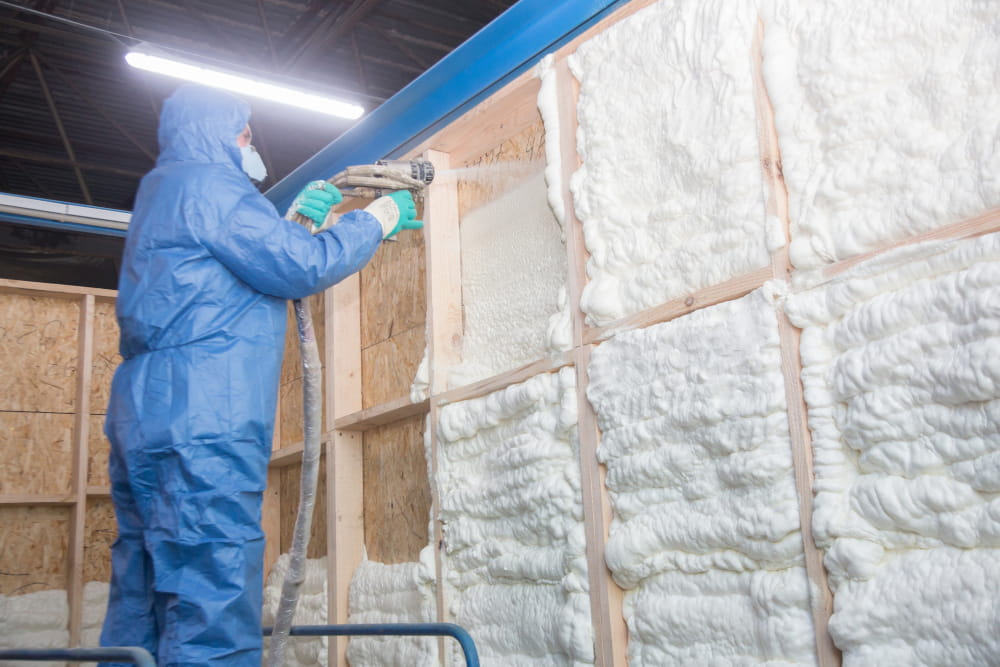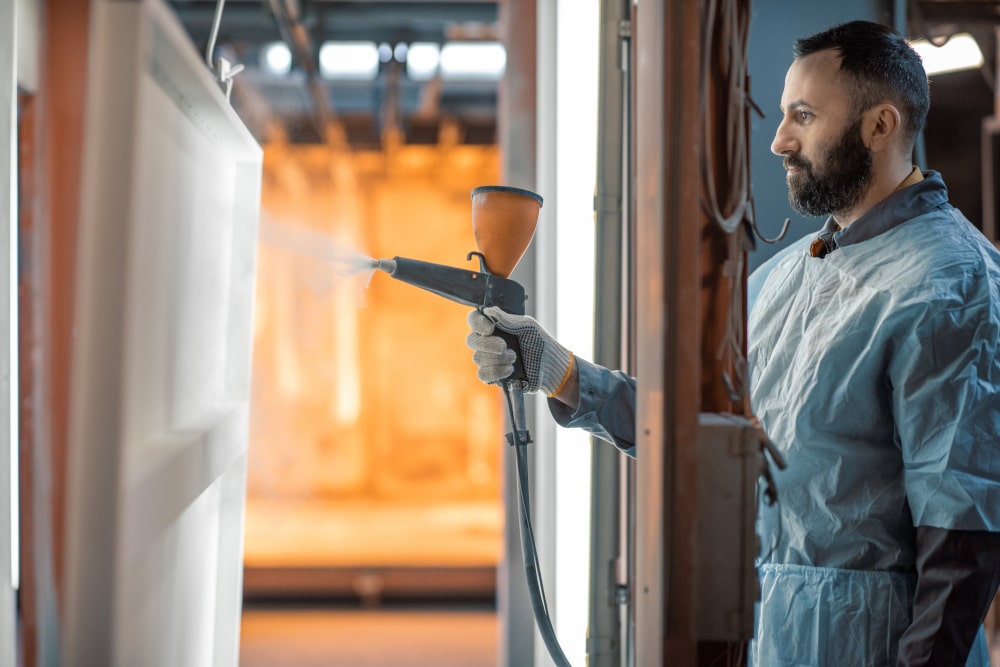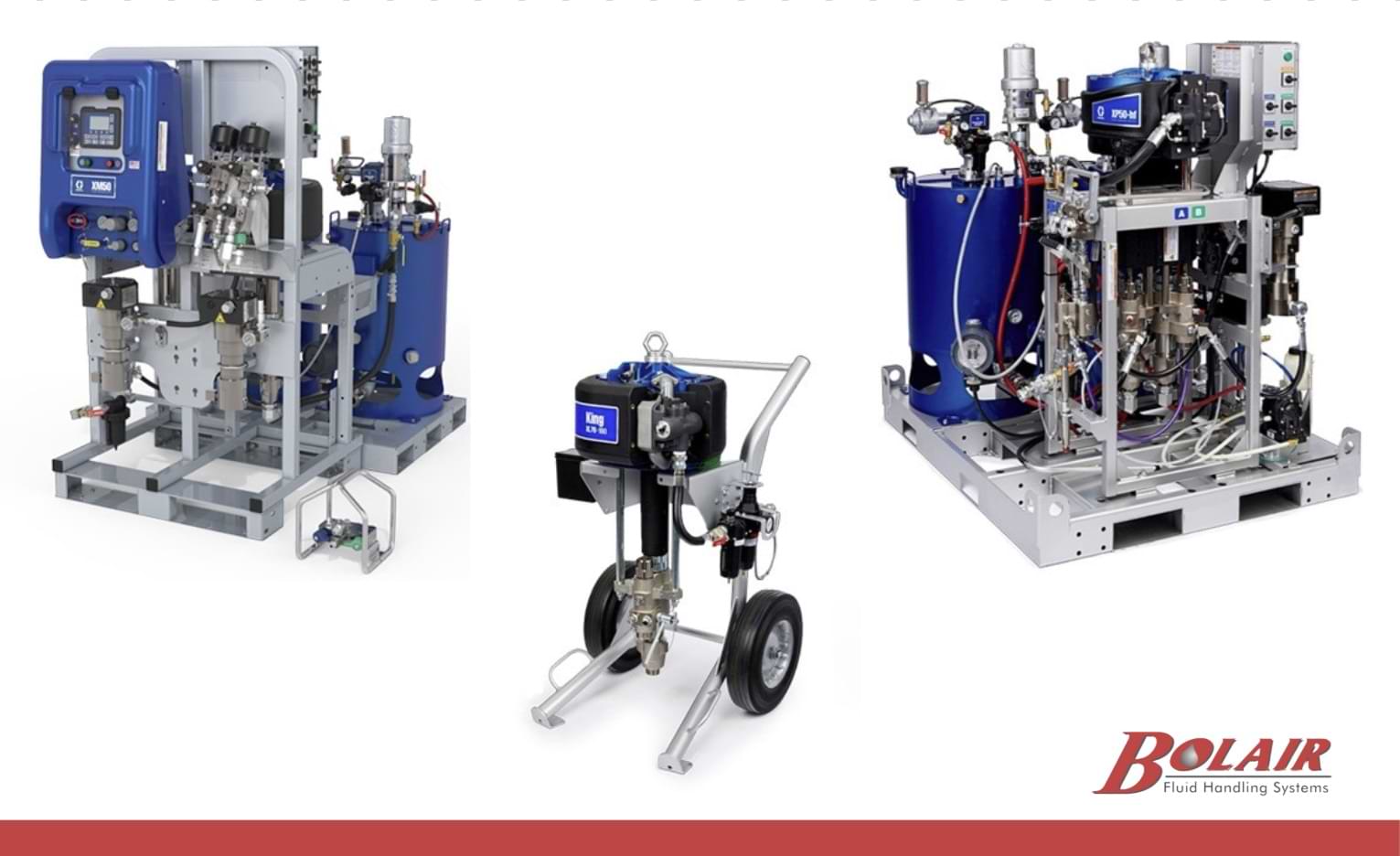Transfer efficiency is a quality that all professionals must consider when purchasing paint spray guns. Improving this efficiency impacts not just costs, but also regulatory compliance. When achieved properly, high transfer efficiency saves money while reducing volatile organic compound (VOC) emissions.
However, this rating is often misunderstood, which often leads to confusion in its applications.
What Is Transfer Efficiency?
Transfer efficiency (TE) is a term used during the finishing process or spray operation. It relates to the amount of material that sticks or adheres to the substrate in relation to the amount that was sprayed through the applicator.
In short, it is the amount of paint that sticks to the surface being sprayed compared to how much comes out of the spray gun itself. It is typically expressed as a percentage.
Choosing the Right Paint Spray Gun for Your Application
Choosing an efficient paint spray gun results in a more efficient application of paint to the surface. The same amount of paint can yield better results in a more efficient paint spray gun. There are several types of technology used in these spray guns, and each one is a bit different in how it works and the advantages it offers. Some of the options to consider include the following
- Conventional Air Spray: This type of spray gun utilizes a low-pressure fluid stream that has compressed air at the air cap. This allows it to atomize the paint material and provides a significant amount of control. This type of paint spray gun is typically used for low- to medium-viscosity fluids, which creates a more decorative finish with higher quality.
- High Volume, Low Pressure (HVLP): HVLP air spray guns limit the amount of air used to 10 psi at the air cap. The result is a good finish quality and higher transfer efficiency than Conventional.
- Compliant Air Spray (LVMP): Compliant spray guns limit inlet pressure to no more than 29 PSI, which meets European regulations. The result is a high transfer efficiency and high quality finish comparable to HVLP.
- Airless Sprayers: This type of paint sprayer creates high pressure without the use of compressed air. It is typically ideally used for larger marine equipment and surfaces that require a high-viscosity material, and works quickly.
- Electrostatic: An electrostatic spray gun electrostatically charges paint while it is being atomized, which is then attracted to and surrounds the surface of the metal part being painted (which has been grounded). This method is very efficient and creates an even, smooth coat. This often leads to less paint being used for the process, creating a quality finish.
- Rotary Atomizer: In this method, a rotary applicator will deliver electrostatically charged paint, but does so in a swirl pattern rather than the traditional form. This increases the quality of the paint application and improves transfer efficiency. This method is often best for surfaces requiring a very high-quality finish.
Transfer Efficiency of Spray Technologies
Each one of these paint spray guns can be beneficial depending on the circumstances. All should be carefully considered, not just by the type but also by the quality of the manufacturing.
Ensure Proper Spray Gun Setup
In order to get the best possible outcome from any paint sprayer, it is also critical to set up the gun in the proper method. There are several key factors to consider in this process.
- Air and Fluid Pressure: Ensuring proper air and fluid pressure is essential, as too much pressure leads to overspray and reduced transfer efficiency. Finding a balance between pressure for a quality pattern and keeping the pressure low enough helps to improve transfer efficiency.
- Spray Pattern: Specifically, consider spray pattern height, as it should match the part that is being sprayed. It is very common for material blowby to occur when the spray pattern is too large, reducing transfer efficiency. Select a spray gun tip that can be sized for the largest height for your parts.
How Does Operator Technique Affect Transfer Efficiency?
How the spray gun is being used also impacts its transfer efficiency. Depending on the function, the technique used by the operator could impact transfer efficiency between 10% to as much as 30%, significantly altering overall efficiency.
The spray gun operator must be trained in how to use it properly. This type of operator training should include developing skills in spraying the right distance from the part and perpendicular to the part. Training should also include proper triggering or de-triggering of the spray gun.
How ASTM and EN Standards Differ
When selecting any type of spray gun, it is critical to ensure it meets compliance requirements. Two tests measure transfer efficiency: this includes EN 13699-1 and ASTM.
- EN 136991 is the European standard, and is carried out by spraying a pattern in the middle of a target, showing a higher transfer efficiency than ASTM standards.
- The American Society for Testing and Materials (ASTM) is always used for electrostatic applicators, as it allows for the measurement of the components that wrap around the surface. This testing method stipulates TE greater.
Paying close attention to paint spray gun transfer efficiency can help in the selection of an appropriate tool that ensures the best finish for the job while minimizing efficiency loss.
At Bolair, our team is dedicated to providing you with the highest quality of supplies and tools for your needs. Reach out to a member of our team today for answers to all your paint spray gun questions.








Validate your login
Sign In
Create New Account